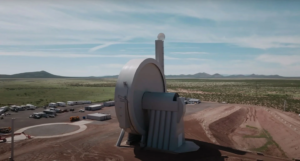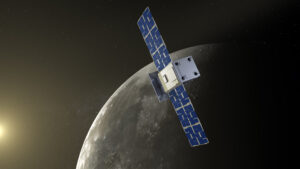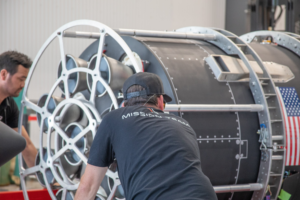
A Closer Look At Orbital Reef & Its Progress
As the International Space Station continues to age, a new generation of space destinations are being developed by a host of different commercial companies. One of the main projects is named Orbital Reef which is led by Blue Origin and Sierra Space with an additional four contributors. Together, they are trying to change what living and working in low Earth orbit is like.
It has officially been just over one year since NASA selected Orbital Reef for a funded Space Act Agreement for collaboration to design a commercially owned and operated space station in low Earth orbit. This anniversary comes in addition to more updates from the company and progress on various important components such as Dream Chaser and New Glenn, to name a few.
This being said, the project is extremely ambitious and heavily relies on many different variables. If one company for example were to experience significant delays, it could have an even more severe effect on this future space station. Here I will go more in-depth into Orbital Reef’s recent progress, one year anniversary, what to expect in the future, and more.
Orbital Reef Update

With the Orbital Reef project comes a host of new challenges to try and create a next generation space station. Just a few days ago the company tweeted saying, “OrbitalReef hosted a workshop @MIT for students to solve future space habitat challenges. With the counsel of #space experts, students found potential solutions to recycling trash, station repairs, and maintaining a consistent supply of food and water.” Here they went a bit more in-depth into some of the core challenges they are trying to solve in the near future.
Orbital Reef, led by principal partners, Blue Origin and Sierra Space, is designed to be the premier mixed-use space station in Low Earth Orbit. It’s trying to provide an ecosystem for commerce, research, and tourism by the end of this decade. However, they point out that there are new and often unprecedented challenges in developing new and innovative architectures for living and working in space. An example of one of these problems includes transporting and storing material within the strict weight limits imposed by space travel, to create an enjoyable experience for those unaccustomed to life in zero gravity. Some other concerns were recycling the trash in space, ensuring adequate spare parts for station repairs, and maintaining a consistent supply of food and water.
Out of this recent competition, the winning team addressed the issue of space station trash and waste disposal using a two-prong approach. The first approach proposed combining plastic waste that has been broken down by special enzymes with captured CO2 resulting in ethanol that can be used for fuel. The second approach is to use an inflatable orbital descent vehicle for waste disposal. The descent vehicle, along with the waste contained inside, would be released from the station and burn up during atmospheric re-entry. Both of these ideas are cost-effective and address trash disposal challenges.
As of right now, Orbital Reef is in the design phase. One of the most recent significant milestones of the project came back in August of this year. Here they announced that the Orbital Reef team had successfully completed its System Definition Review (SDR) with NASA. The SDR demonstrates to NASA that the space station design is feasible and achievable while validating that the Orbital Reef system is on-track to proceed into the design phase. Specifically, it included an extensive review to ensure that the proposed Orbital Reef architecture is responsive to the functional and performance requirements; it examined the proposed system architecture and the flowdown to all functional elements of the Orbital Reef system. The successful SDR supported NASA’s decision to further develop the system architecture and design. Representatives from Blue Origin, Sierra Space, team members, and NASA participated in the review, conducted between mid-June and mid-July to allow in-depth review of documentation and feedback to the team.
Project Overview

Now that we know more about some of the progress the Orbital Reef team as a whole has made, we can take a closer look at some of the individual companies including Sierra Space and Blue Origin. As partially mentioned prior, this project involves 6 different contributors with Sierra Space and Blue Origin leading the team. From day one each company involved outlined exactly what they are working to provide for the station. In Blue Origin’s case, they are responsible for leading the development of the station’s infrastructure, large-diameter metal modules, last-mile space tug, and reusable heavy-lift New Glenn launch system. Next is Sierra Space which leads the development of the LIFE (Large Integrated Flexible Environment) habitat, the small-diameter metal node modules, and Dream Chaser spaceplane for crew and cargo transportation with runway landing anywhere in the world.
Focusing on Sierra Space first, the company is making some promising progress. Over the last couple of weeks, we have received more and more information regarding Dream Chaser Tenacity and its upcoming first launch scheduled in the third quarter of 2023. In order for this launch to happen on time, a few things need to be completed prior. The first is that ULA’s Vulcan Centaur needs an on time successful maiden flight within the next few months. This is the rocket responsible for Dream Chaser’s first mission. If something were to go wrong here, it would add some significant delays in the search for another available launch vehicle. In addition, the Dream Chaser test article has to be ready as well. Last month in October the company tweeted mentioning, “Right now, our Dream Chaser team is hard at work affixing more than two thousand hand-cut thermal tiles. We’ll have more photos and close-ups of Tenacity coming soon.” By now in early December Tenacity is making good progress and a majority of its thermal tiles have been installed.
The other primary contribution from Sierra Space is the LIFE Habitat. The LIFE habitat is 27 feet in diameter and 27 feet long, including its vestibule. The LIFE habitat’s pressurized volume is 300 cubic meters, or about 1/3 of the pressurized volume on the International Space Station. The inside of the habitat consists of three floors outfitted with everything a crew of four astronauts would need to live in space and perform science missions. This includes science labs, robotics work stations, medical and sick bay, sleep and hygiene quarters, galley, exercise equipment, Sierra Space’s Astro Garden plant growth system, and ample storage room for crew supplies. In the last couple of months, we watched a pressure test on a scale model of this system. Sierra Space reported that it performed much better than expected and they are continuing to work on the habitat. Altogether, Sierra Space is making good progress and is on track to have capable systems for Orbital Reef by the end of the decade.
Next is Blue Origin and primarily the New Glenn system. New Glenn is a partially reusable heavy lift launch vehicle. The 7-meter fairing has two times the payload volume of any existing launch vehicle, which means more room for satellites and the freedom to build in more capacity. New Glenn is also able to launch and land in 95% of weather conditions, helping make it a reliable option for payload customers in the future. Not to mention New Glenn’s fully reusable first stage is designed for a minimum of 25 flights with the goal of lowering costs and increasing launch cadence. As far as progress goes, Blue Origin has faced quite a few delays throughout this project. Right now the company is targeting the first launch in 2024 however a more realistic estimate is 2025 or even later. Unfortunately for Blue Origin, they still have a lot of work ahead of them that could end up affecting Orbital Reef’s schedule. On the bright side, one of the main components of New Glenn is making progress. The first two flight ready BE-4 engines are only months away from lifting off on Vulcan Centaur. In addition, the company has commented that they are increasing engine production at this time.
All of which comes back to Orbital Reef which just reached its one year anniversary since being picked by NASA. Back on December 2nd, 2021, Orbital Reef was selected by NASA for a funded Space Act Agreement for collaboration to design a commercially owned and operated space station in low Earth orbit (LEO). NASA’s Commercial LEO Development program aims to shift NASA’s research and exploration activities in LEO to commercial space stations, helping stimulate a growing space economy before the International Space Station is retired. The Orbital Reef team includes Boeing, Redwire Space, Genesis Engineering Solutions, and Arizona State University. In the time since then, besides individual project progress, Orbital Reef has completed both its SRR and SDR with the agency. A decent amount of progress that will need to be increased over time if they want to meet future deadlines.
Conclusion
Orbital Reef is a very ambitious space station of the future hoping to be ready by the end of this decade. While having multiple companies involved can help improve the work necessary, it also can hold the project back if delays hold back a specific project. Either way, both Sierra Space and Blue Origin are continuing to try and make progress on the future of living and working in space. We will have to wait and see how it progresses and the impact it has on the space industry.



